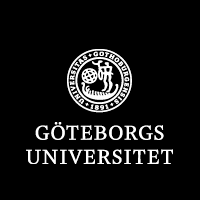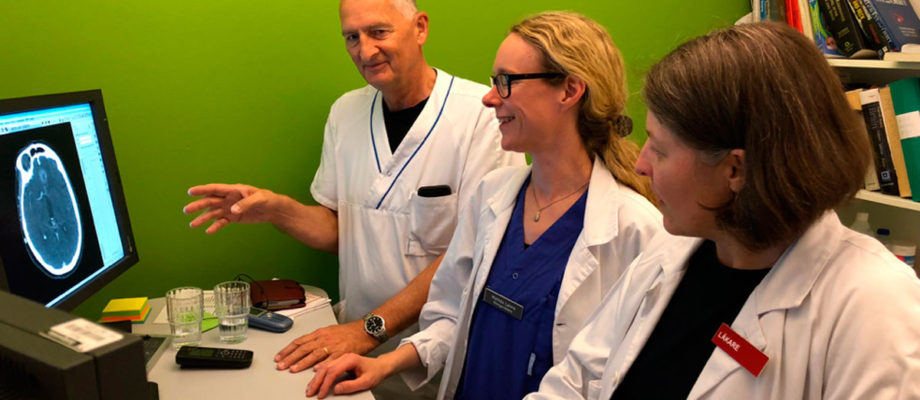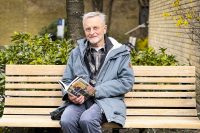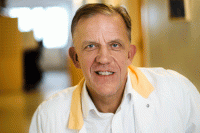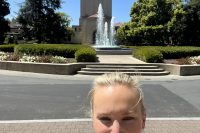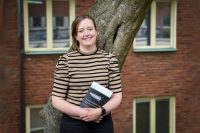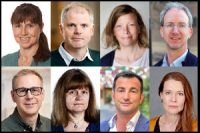NEW PROFESSOR. As a new professor of neuroradiology, Isabella Björkman-Burtscher is now looking forward to further developing neuroradiology at our faculty. She maintains that the importance of radiology has increased and that it is in the midst of an exciting technological development, for example regarding the use of artificial intelligence.
She joins us from Lund, where she had a combined position as a neuroradiologist and senior lecturer. At Skåne University Hospital she also was the responsible radiologist for the national 7T facility. This is a magnetic resonance imaging (MRI) unit with a 7-Tesla magnetic field – a Swedish research resource that can also to some extent be used clinically to examine patients.
More than a service discipline
Her lilting Skåne dialect hides the fact that she was born in Austria. She received her medical training there and earned her medical degree in 1995 at the University of Innsbruck. While pursuing a research project in Lund, she fell in love in Sweden and moved here. She obtained her PhD at Lund University in 1999 with the dissertation Proton Magnetic Resonance Spectroscopy in Brain Tumors – Clinical Applications.
After 23 years in Lund, it felt right for Isabella to move to Gothenburg:

“Sahlgrenska Academy has a good reputation with many interesting centers of expertise and research and partners such as Chalmers, Sahlgrenska Science Park, Lindholmen Science Park, Medtech West and the Imaging and Intervention Center (BoIC) at Sahlgrenska University Hospital, just to name a few,” says Isabella, who now becomes a member of the team in the Department of Radiology.
In her new role as a professor, Isabella would like to emphasize both mentoring and upholding her subject, neuroradiology.
“Active mentors create the potential for other committed scientists to grow. A vibrant research environment requires a certain critical mass. Otherwise there’s an unfortunate tendency for knowledge and competence gaps to arise in connection with retirements or if people choose to move and no consideration has been given to succession.”
Three-dimensionally and functionally

Technological development is advancing quickly. New methods of examination and inquiry based on imaging and function provide both three-dimensional images and functional information, which become the basis for advanced research, diagnostics and treatment in most areas. The new technologies also mean safer, faster and gentler examinations of patients.
“Although I have chosen a specialty where I rarely have direct patient contact myself, I prefer to work closely with patients in my research and strive for results that will benefit them in near future,” says Isabella.

She strives to build bridges between technology and health care in both preclinical and clinical research and envisions many possible synergies through collaboration among academia, health care and the business community.
“I hope to be able to bring together different stakeholders and also increase collaboration among Swedish universities. Together we increase the opportunities for success both faster and better than if we all keep to ourselves.”
Onward with AI
She describes radiology as exciting diagnostic detective work, and she cites epilepsy and cancer as some of the areas where neuroradiology at Sahlgrenska Academy can make a contribution. She also wants radiology to contribute to the further development of diagnostic methods and the implementation of artificial intelligence (AI) in health care.

Within radiology, AI can facilitate work in several different professional roles in health care. But work is needed to meet the requirements brought on by the technological development.
“These are challenging technologies that need to be interwoven and imbued with technical accuracy, humanism and ethics. So we need to make sure that we join the train, developing and working to maintain clinical reliability in collaboration with other stakeholders in society.”
Being able to incorporate and validate AI-based innovations in medical contexts requires large amounts of data that need to be managed in accordance with applicable legislation.
“The individual who stands out from the technically defined norm may not be overlooked, and medical decision-making always needs to ultimately lie with the patient and the doctor.”
Simple picture of how MRS works
MRS (magnetic resonance spectroscopy) is a technology that permits an analysis of chemical metabolites of the body’s various tissues. The examination can be done while the patient lies in an MRI scanner and without the need to take tissue samples. The results of the examination are presented as curves, known as spectra, which illustrate chemical substances in the form of peaks. The position of the peak indicates the substance, and its size (the area under the peaks) provides information on the concentration of the substance. In the case of disease, there is a change in the concentration of the substance that can be measured with MRS. (Excerpt from Isabella’s dissertation)
TEXT: SUSANNE LJ WESTERGREN / ELIN LINDSTRÖM CLAESSEN
PHOTO: KENNET RUONA / GÖRAN STARCK / STEFANIE ERIKSSON / ÅSE JOHNSSON
